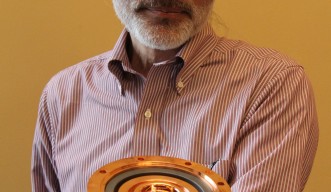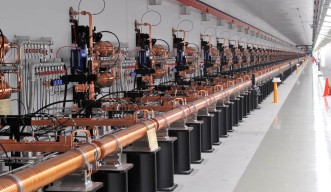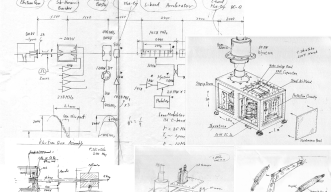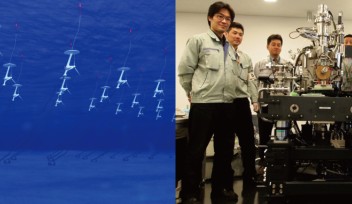Prof. Tsumoru Shintake Awarded Gersch Budker Prize

Congratulations to Professor Tsumoru Shintake. The European Physical Society (EPS) announced on March 20 that this year’s Gersch Budker Prize will go to OIST Professor Tsumoru Shintake for leading the design, construction, commissioning and operation of the SACLA X-Ray Free Electron Laser. Prof. Shintake, who now heads the OIST Quantum Wave Microscopy Unit, previously worked at the SACLA facility at RIKEN, where he was the main accelerator construction leader.
The Gersch Budker Prize is awarded annually by the EPS Accelerator Group (EPS-AG) to a scientist with “a recent significant, original contribution to the accelerator field.” The EPS-AG Committee cited Prof. Shintake’s leadership in “the construction of the SACLA X-Ray FEL based on novel C-band technology in the RIKEN SPring-8 Center.” The 400 m long SACLA linear accelerator, with accelerating gradients of 35 MV/m, provides 8 GeV beams with extreme energy stability better than 0.014%. The Committee said, “Prof. Shintake contributed to all aspects of the project including the electron source, the C-band linac and the undulator alignment. His visionary choice of a thermionic gun, with CeB6 single crystal as cathode material, has proven to be successful in terms of emittance and stability. The first lasing of the FEL in June 2011 was the crowning achievement of numerous technological developments, and was also made possible by the successful industrialization of the C-band technology, developed from scratch.” The C-band high gradient accelerator is now running stably to drive beams of low emittance electrons created by a thermionic electron source, making it possible to generate stable X-ray radiation. SACLA is expected to resolve questions in science, technology and industry, by helping to understand structure and function at the atomic level.
The SACLA facility took nearly 20 years from the first conception of the C-band to first light. Once the facility’s construction began, Prof. Shintake worked both as a researcher and an engineer, overseeing more than 200 staff. “The foundation of technological innovation lies in people,” said Prof. Shintake. To him, the most important aspect of a research project is to learn from failures and experiences. In receiving the award, Prof. Shintake recalled many years of setbacks and progress to build the C-band main accelerator, “When you start from zero, you end up building a device that is truly reliable because you understand the details.”
Prof. Shintake’s vision to build devices from scratch is currently being accomplished at OIST. His unit is building a microscope, which uses the quantum wave effect of electron beams, to enable the observation of biological samples at the atomic level without damaging the samples. Once the exact structure of viruses is determined by this new microscope, it will become possible to fabricate medicine that could prevent the viral infection in the near future.
“I am delighted that Prof. Shintake has been awarded this prestigious prize,” said OIST President Jonathan Dorfan. “We have known each other for many years, starting with his work at the Stanford Linear Accelerator Center where Prof. Shintake deployed the ‘Shintake Monitor’. He continues to show equal creativity and scientific excellence as a senior Faculty member at OIST.”
The EPS-AG Committee concluded, “Last but not least, Prof. Shintake’s numerous highly innovative ideas strongly influenced the progress and development of many areas of accelerator physics and technology over the past decades, including a beam size monitor for nanometer sized beams now called the ‘Shintake Monitor’. ” The award ceremony is scheduled to take place on June 19, at the fifth International Particle Accelerator Conference in Dresden, Germany.
By Mayumi Nishioka
Specialty
Research Unit
For press enquiries:
Press Inquiry Form















